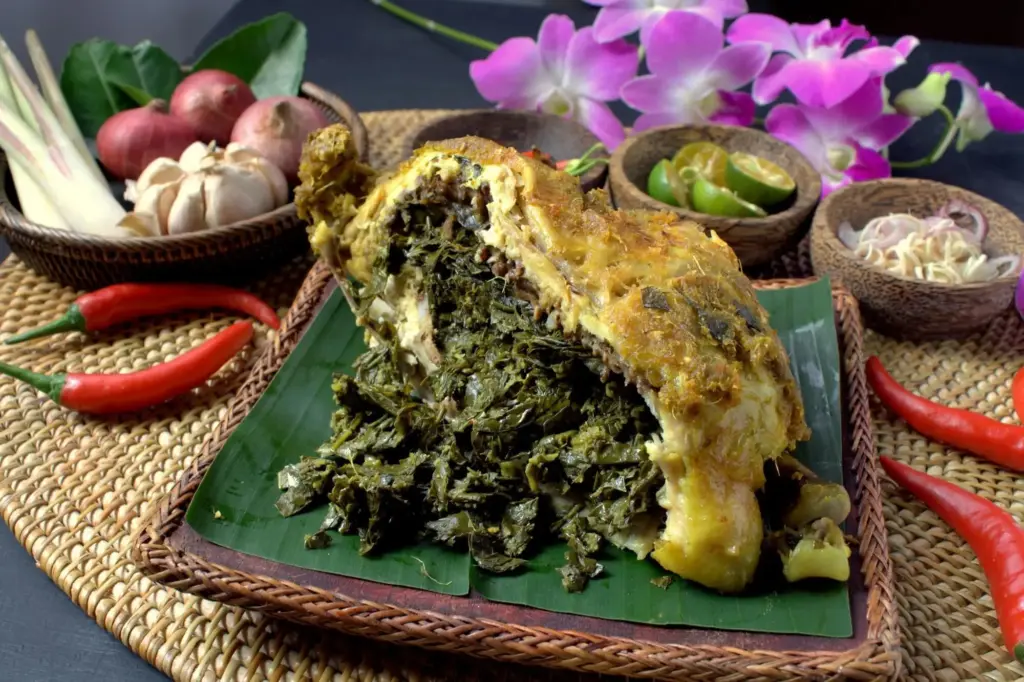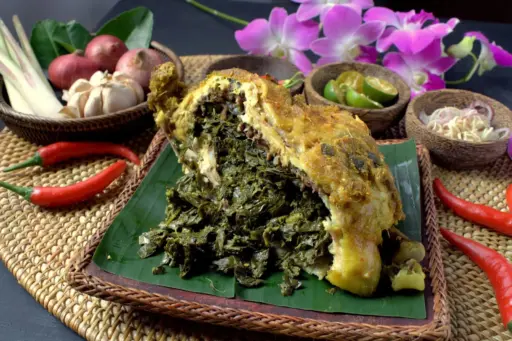EATING YOUR WAY THROUGH BALI’S TRADITIONS
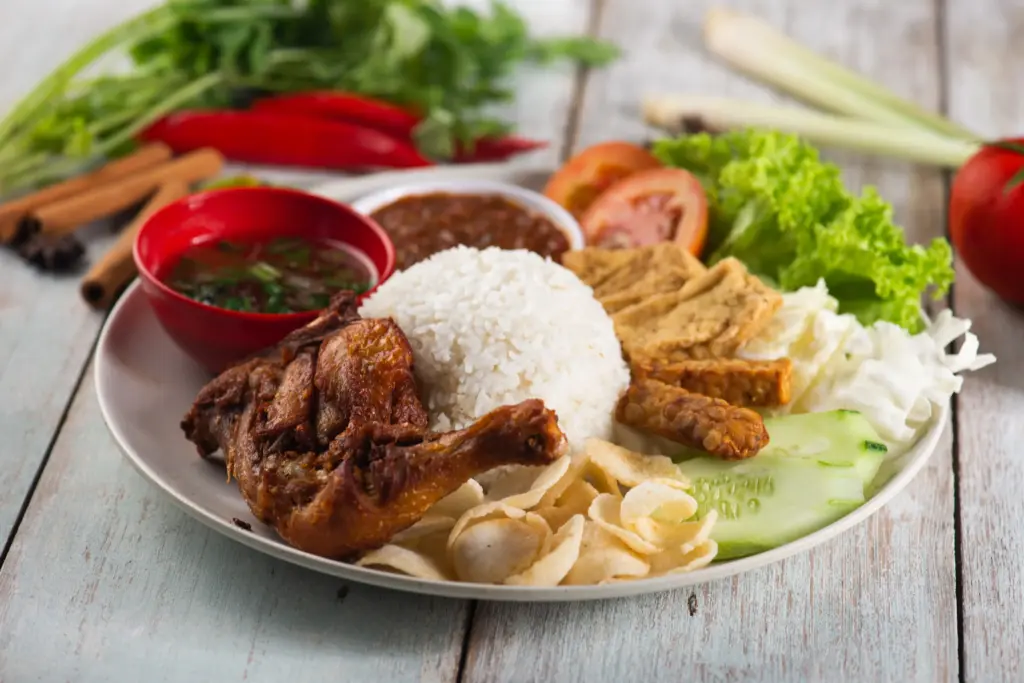
Bali’s landscapes may capture your eyes first, but its food will win your heart. Beyond the well-known Indonesian staples like nasi goreng and mie goreng lies an entire world of Balinese food – deeply tied to the island’s culture, ceremonies, and community life.
Many traditional dishes are still prepared the same way they have been for centuries, using fresh local ingredients, fragrant spice pastes (base genep), and slow cooking methods. For travellers, trying these dishes is not just about satisfying hunger; it is about tasting Bali’s heritage.
THE ROLE OF FOOD IN BALINESE CULTURE
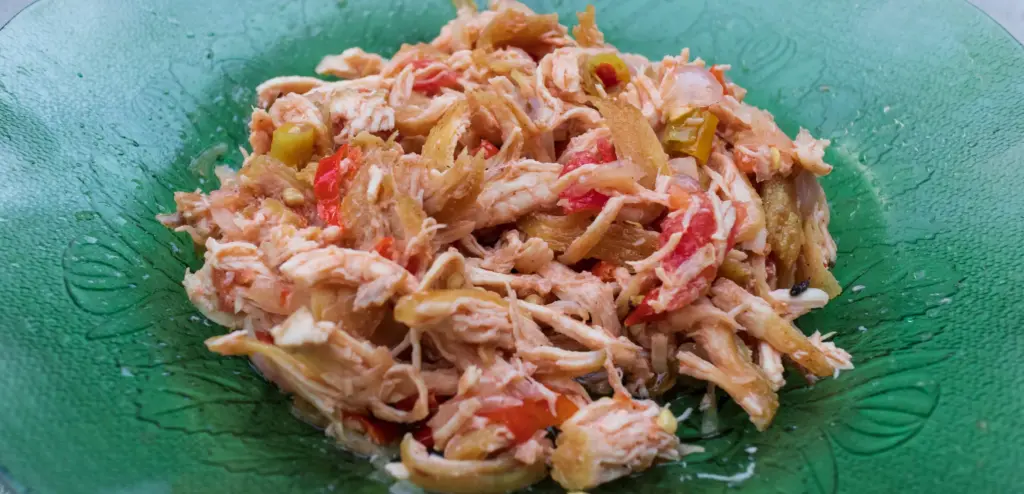
Balinese cuisine is inseparable from the island’s religious and social traditions. Food offerings (banten) are part of daily rituals, and large feasts are central to temple ceremonies, weddings, and community gatherings.
Many iconic dishes, like babi guling and bebek betutu, were once reserved for special occasions but are now easier to find in local warungs and markets, especially in towns known for their culinary specialties.
10 TRADITIONAL BALINESE DISHES TO TRY
Babi Guling (Suckling Pig)
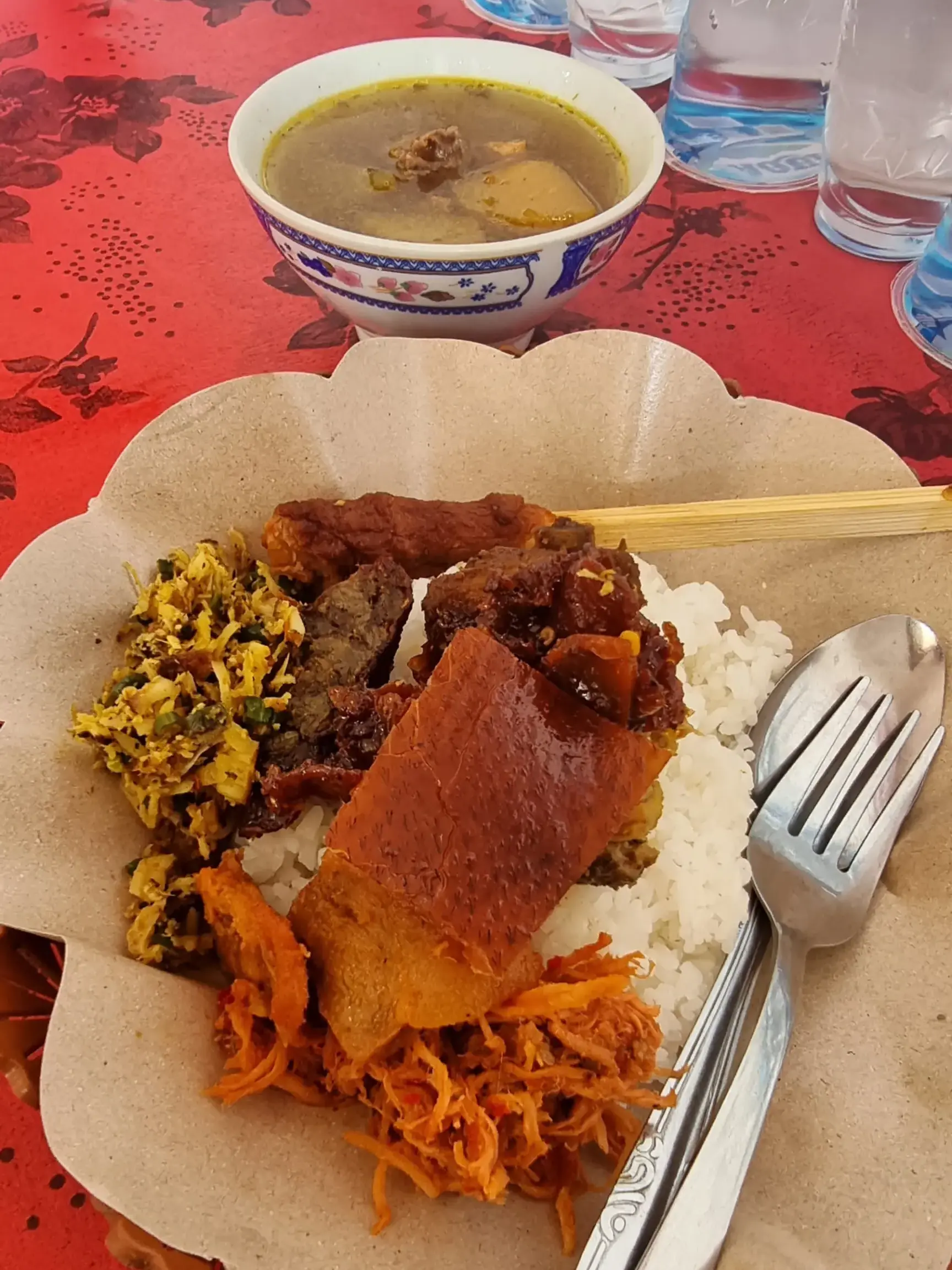
Perhaps Bali’s most famous ceremonial dish, babi guling is a whole pig stuffed with spices, rubbed with turmeric, and spit-roasted over an open fire until the skin is crisp. The meat is tender, fragrant, and served with rice, lawar (vegetable mix), and sambal.
· Where to try: Warung Babi Guling Candra in Denpasar, Warung Babi Guling Sanur, Babi Guling Karya Rebo in Kuta, Warung Babi Guling Pak Malen in Seminyak, Ibu Oka in Ubud (very touristy nowadays though), or roadside stalls in Gianyar.
Bebek Betutu (Slow-Cooked Duck)
A festive dish of duck stuffed with spice paste, wrapped in banana leaves, and slow-cooked for up to 24 hours. The result is fall-off-the-bone tender meat infused with deep, earthy flavours.
· Where to try: Bebek Tepi Sawah in Ubud or local restaurants in Gilimanuk.
Lawar Bali
A mix of chopped vegetables, grated coconut, and minced meat or fish, seasoned with herbs and spices. Variations include lawar merah (with blood for a richer flavour) and lawar putih (without blood).
· Where to try: Traditional warungs across Bali, often served alongside babi guling.
Ayam Betutu
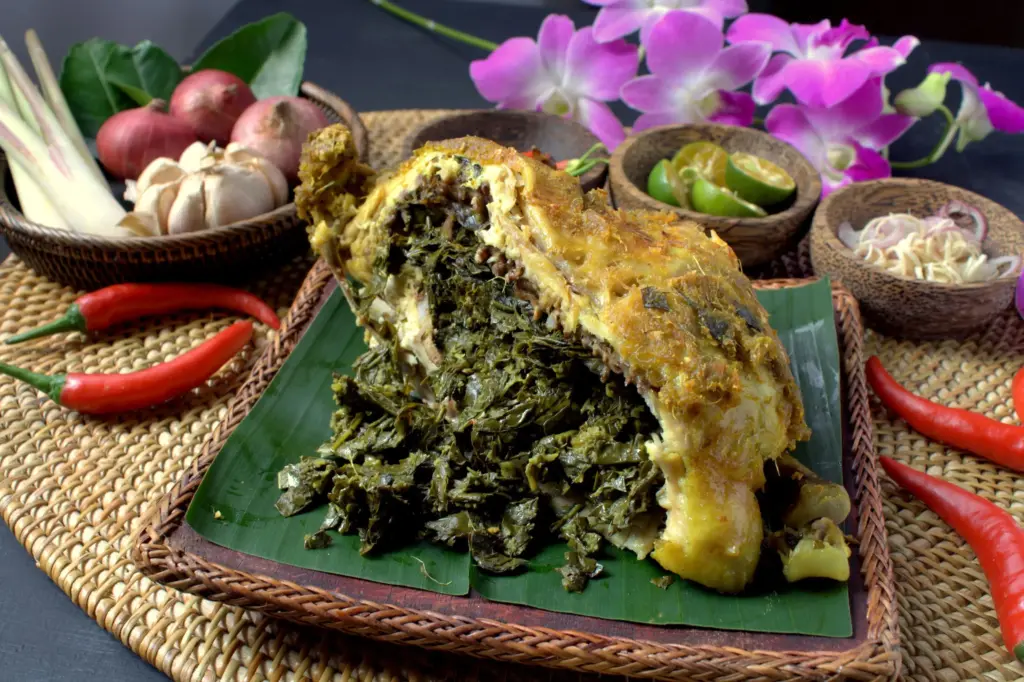
The chicken counterpart to bebek betutu, ayam betutu is faster to cook but equally rich in flavour. It is common at ceremonies and often served with peanuts, sambal, and rice.
· Where to try: Many Balinese warungs; Gilimanuk is especially famous for betutu.
Sate Lilit
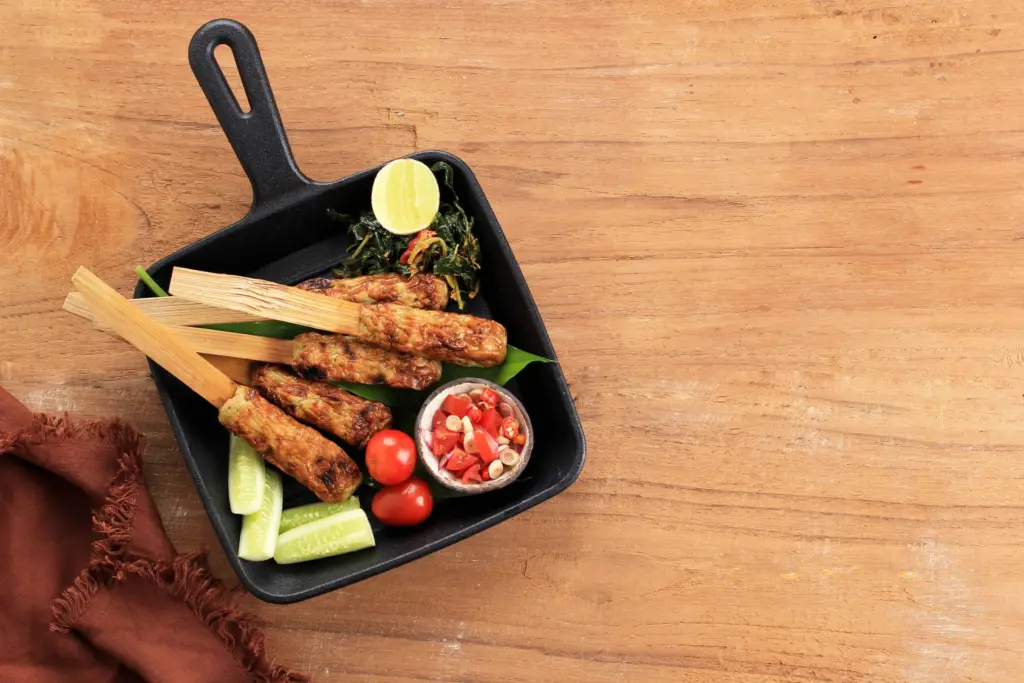
Minced fish or chicken mixed with coconut, lime leaves, and spices, wrapped around lemongrass sticks, and grilled. Smoky, fragrant, and slightly sweet.
· Where to try: Night markets in Gianyar, Sanur, and Denpasar. There is also an excellent small warung at the entrance to Legian Food Court (right hand side as you go in).
Urab/Urap Sayur
A vegetarian-friendly dish of blanched vegetables (long beans, spinach, bean sprouts) tossed with spiced grated coconut. Fresh, light, and often served as a side.
· Where to try: Ubud’s local warungs and market stalls.
Nasi Campur Bali
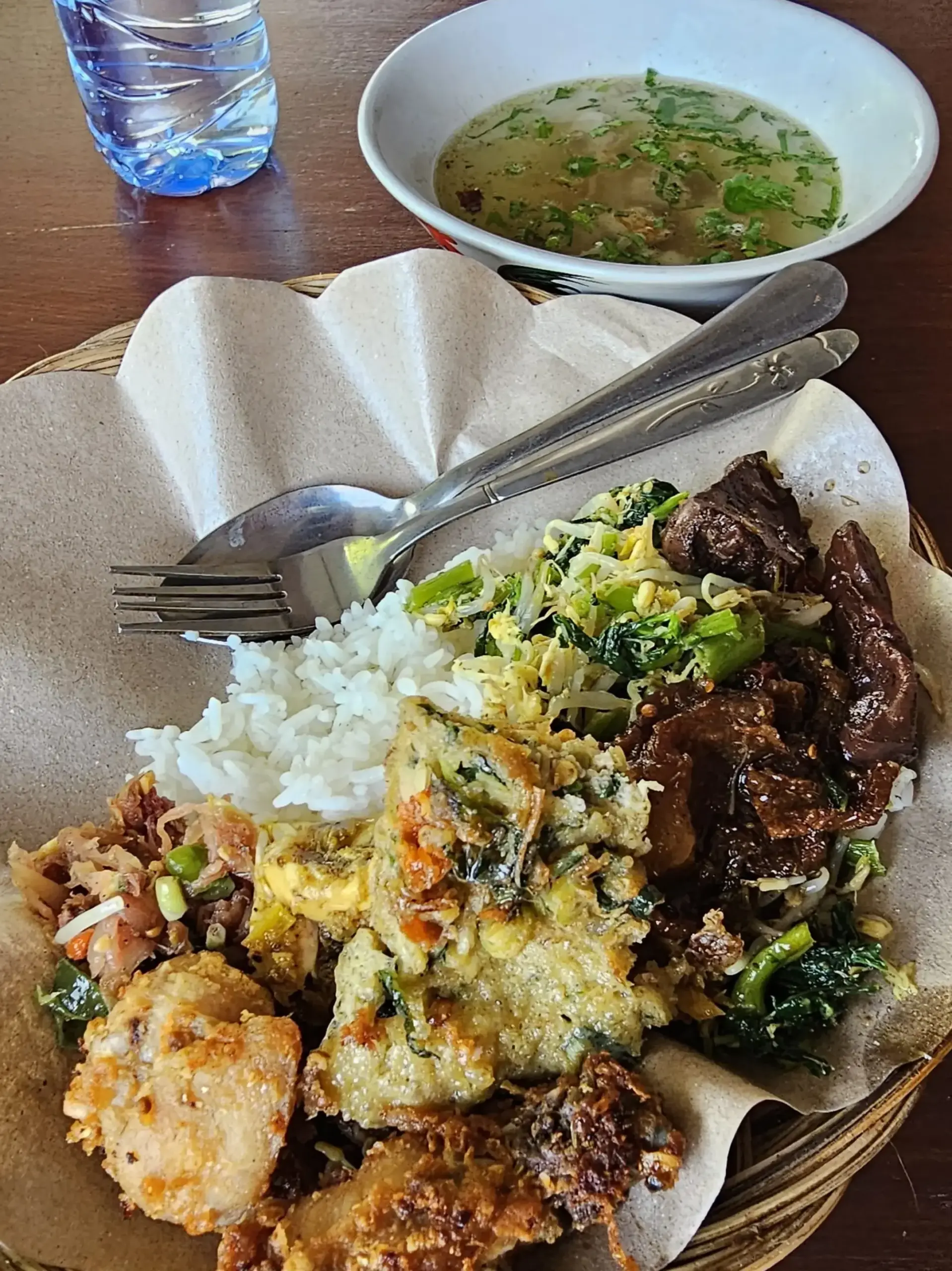
A mixed rice plate with small portions of several dishes – lawar, sate lilit, sambal, vegetables, fried tempeh, and sometimes meat. A great way to sample multiple Balinese flavours in one meal.
· Where to try: Almost every warung; Warung Wardani in Denpasar is a favourite.
Tum Ayam
Minced chicken mixed with spices, wrapped in banana leaves, and steamed. Similar to pepes in other parts of Indonesia, but with distinct Balinese seasoning.
· Where to try: Small warungs in rural areas, especially in Gianyar.
Tipat Cantok
A vegetarian dish of rice cakes (tipat) mixed with boiled vegetables and peanut sauce. A Balinese cousin to gado-gado.
· Where to try: Street food stalls in Denpasar and Tabanan.
Jaje Bali (Balinese Cakes)
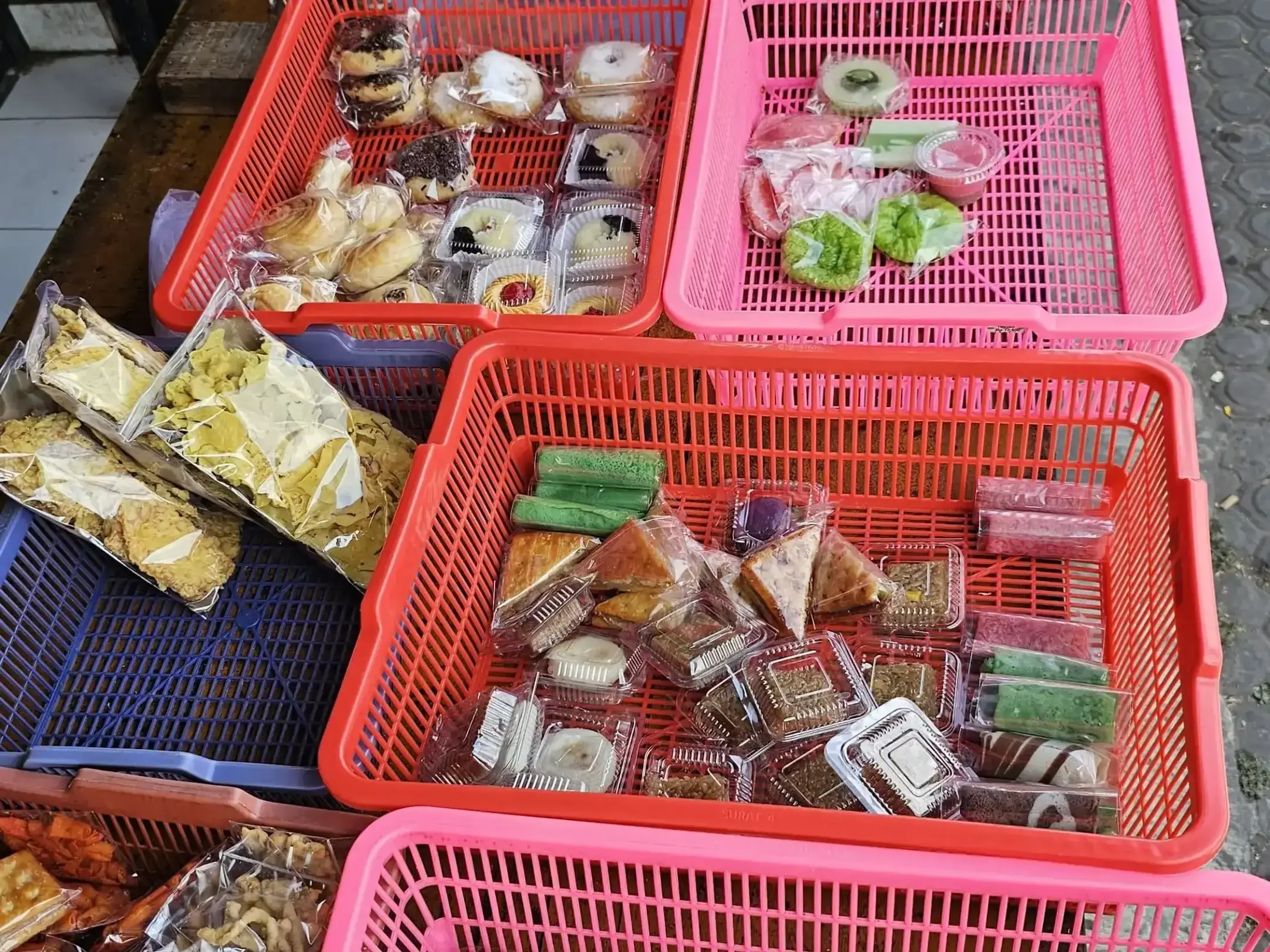

A colourful assortment of traditional sweets made from rice flour, coconut, and palm sugar. Popular varieties include klepon (glutinous rice balls filled with palm sugar) and dadar gulung (green pancakes with coconut filling).
Where to try: Morning markets across the island.
WHERE TO EAT AUTHENTIC VERSIONS
While some hotel restaurants serve Balinese food, the most authentic flavours are often found in:
· Family-run warungs (small eateries).
· Night markets like Gianyar and Sindu.
· Village ceremonies (if you are invited, always accept).
Some villages specialise in certain dishes – for example, Gianyar for babi guling, Gilimanuk for betutu, and Klungkung for lawar.
Restaurants to try include:
· This Is Bali – Balinese Food & Desserts in Gianyar
· Kekeb Restaurant in Nusa Dua
· Art Cafe Bumbu Bali in Benoa
BALINESE FOOD VERSUS INDONESIAN FOOD – WHAT’S THE DIFFERENCE?
While Bali shares some dishes with the rest of Indonesia, Balinese food is distinct in its use of pork (uncommon in Muslim-majority regions), heavy spice pastes, and ceremonial cooking methods. The influence of Hindu culture is also evident in the ingredients and presentation.
TIPS FOR TRAVELLERS TRYING LOCAL FOOD FOR THE FIRST TIME
· Start Mild: Ask for tidak pedas (not spicy) if you are unsure about heat levels.
· Eat Early: Many warungs cook fresh each morning and sell out by afternoon.
· Be Open to Texture and Flavour: Dishes like lawar may have unfamiliar ingredients but are worth trying.
· Ask Locals: Drivers, guides, and market vendors often know the best spots.
SUGGESTED “BALINESE FOOD DAY” ITINERARY
· Breakfast: Kopi Bali and jaje Bali from a morning market.
· Lunch: Nasi campur at a local warung.
· Afternoon Snack: Pisang goreng or tipat cantok from a street stall.
· Dinner: Babi guling or bebek betutu at a specialty warung.
To truly experience Bali, you have to eat like the locals do. From the spice-packed complexity of babi guling to the simple freshness of urab sayur, Balinese food offers a deep connection to the island’s traditions. Try it in small family warungs, at lively markets, and – if you are lucky – at a village celebration, and you will taste not just the food, but the spirit of Bali itself. Wander Beyond Ordinary!
